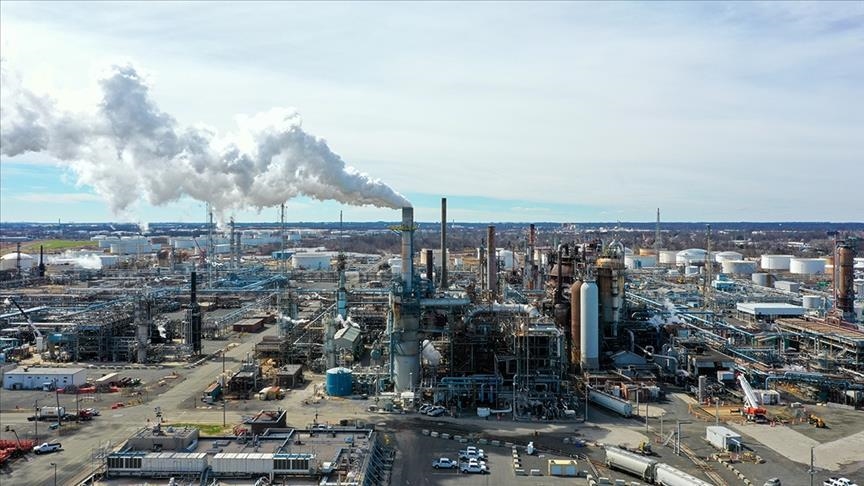World’s biggest 14 emitters are all oil and gas fields, most located in US and Russia
SHARM EL-SHEIKH, Egypt
Oil and gas fields account for the majority of the world’s 14 largest emitters, with the Permian Basin in Texas being the largest and Russia’s Urengoy gas field ranking second, according to Climate TRACE’s newly released emission inventory data compiled by Anadolu Agency.
The data shows there are 70,00 individual sources of emissions worldwide at 56.3 billion tons of CO2 equivalent based on 100 years (CO2-e100).
Despite the data revealing that power plants are responsible for more than half of the global emissions, oil and gas fields are the leading individual sources of emissions.
Among them, emissions from the Permian Basin in Texas, which accounts for about 40% of oil production and 15% of natural gas production in the US, are the largest at 208.6 million tons of CO2-e100.
Ranking second is Russia’s Urengoy gas field in Western Siberia, emitting 152 million tons of CO2-e100. With estimated initial reserves of 10.9 trillion cubic meters, the field is known as the world’s largest gas condensate field.
Emissions from one of the fastest-growing gas fields, the Marcellus gas field near New York, stand at 124.4 million tons of CO2-e100.
The Bovanenkovskeye gas field in Russia is responsible for emitting 122.7 million tons of CO2-e100. Based on the Yamal Peninsula, its gas reserves are estimated at two trillion cubic meters.
Iran’s South Pars gas field, holding 8% of the world’s total gas reserves and about 50% of the country’s domestic gas reserves, is the source of 118 million tons of CO2-e100.
The data shows that the Zapolyarnoye gas field in Siberia, accounting for around 8% of Russia’s daily output, has emitted 105.4 million tons of CO2-e100.
The Permian-New Mexico region is the world’s seventh-largest emitter, with the largest deposit of oil and gas ever documented by the US Geological Survey in the country. According to data, the basin is responsible for 93.1 million tons of CO2-e100.
Historically, the US has been the world’s largest emitter, but China has surpassed it in terms of current emissions.
China’s largest onshore gas field, the Sulige gas field, ranks as the eighth-largest individual source of emissions at 80.8 million tons of CO2-e100. The field is estimated to have cumulative proven gas in place of 1.68 trillion cubic meters.
Emissions from Russia’s Yamburgskoye, defined as the world’s third-largest natural gas field, reached 75.1 million tons of CO2-e100.
The Hassi R’mel gas field in Algeria, which contributes to around 20% of the country’s gas output per day, ranks as the tenth-biggest emitter globally with 73.8 million tons of CO2-e100.
Among the 14 largest emitters is the Haynesville gas field in the US, which is responsible for 64.3 million tons of CO2-e100.
Iraq’s Rumaila oil field also has a sizable 48.6 million tons of CO2-e100, while the Ghawar oil field in Saudi Arabia produces 47.5 million tons of CO2-e100 and the emissions output from the Bakken oil field in North Dakota, described as the “birthplace of America’s oil boom a decade ago,” totals 43.5 million tons of CO2-e100.
With exception of oil and gas fields, highest emitter is steel factory in China
The biggest individual source of emissions, except for oil and gas fields, is the Jiangsu Shagang Group’s steel factory, located in the Jiangsu province of China. The group produced 44 million tons of liquid steel last year, ranking as the fifth-largest steelmaker worldwide.
It is the world’s fifteenth largest emissions source at 43.3 million tons of CO2-e100.
According to the Climate TRACE inventory, emissions from the oil and gas sector are three times higher than reported due to underreporting.
Anadolu Agency website contains only a portion of the news stories offered to subscribers in the AA News Broadcasting System (HAS), and in summarized form. Please contact us for subscription options.




